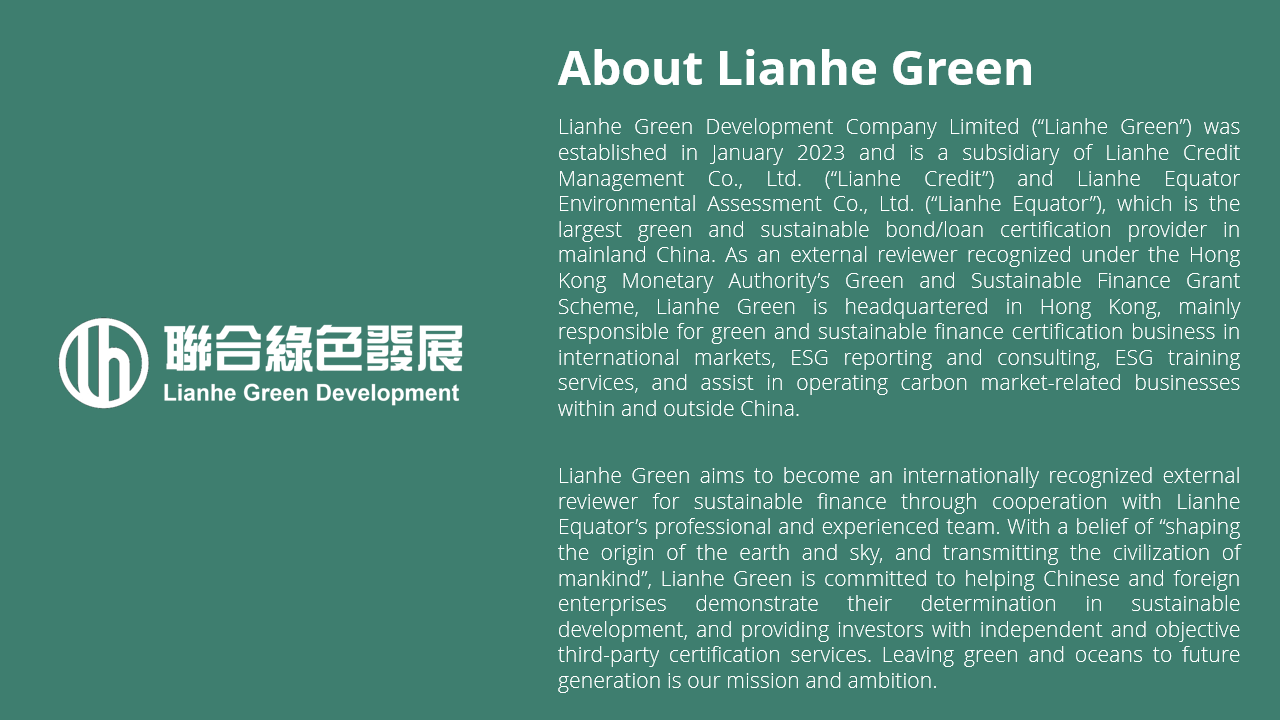所屬分類:報告與見解發佈時間:2025-04-01

As sustainable finance continues to accelerate globally, so too does the need for clearer, stronger, and more credible frameworks. On 26 March 2025, the Asia Pacific Loan Market Association (APLMA), Loan Market Association (LMA), and Loan Syndications and Trading Association (LSTA) jointly released major updates (hereinafter referred to as the '2025 Update Principles') to the Green Loan Principles (GLP), Social Loan Principles (SLP), and Sustainability-Linked Loan Principles (SLLP).
These revisions elevated the standard of practice, reduced ambiguity, and introduced new mechanisms to prevent greenwashing and social washing. They also provide practical solutions to help cross-border borrowers—particularly in Asia—navigate regulatory and market complexities.
1. A Foundation of Clarity: Interpretation of Terms
A new "Interpretation of Terms" section has been added to all three frameworks, clarifying:
Lianhe’s View: This subtle but important change introduces greater clarity, signifying a shift from flexibility to compliance. It reflects the growing maturity of the sustainable loan market and a stronger expectation of adherence and accountability.
2. Sustainability-Linked Loans (SLLP): Expanding the Toolkit
a. KPIs Must Be Strategically Aligned and Verifiable
The 2025 SLLP now mandates that selected KPIs shall be:
b. Clarified Acceptance of Green CapEx and ESG Ratings as KPIs
The 2025 Update Principles codifies widely adopted market practices, offering clear validation for:
c. Strengthened Verification Requirements
A pivotal change: the language has shifted from "should" to "shall" in requiring that:
“Verification shall be conducted by a qualified external reviewer with relevant expertise.”
Lianhe’s View: This enforces independent, credible verification of SPT performance, reinforcing trust in the product’s integrity. For example, Lianhe Green is a recognized external reviewer under the GSF Grant Scheme by Hong Kong Monetary Authority
3. Green and Social Loans: Expansion with Precision
a. Equivalent Use of Proceeds
Both the GLP and SLP now clarify that:
“Proceeds or an equivalent amount shall be exclusively applied...”
b. Updated Project Categories
Both GLP and SLP broaden the scope of eligible project types:
c. Enhanced Mandates for Core Components
In both the GLP and SLP, the language governing the four core components has been strengthened—from advisory (“should”) to mandatory (“shall”). This shift elevates these components from recommended best practices to minimum expectations, reinforcing accountability and helping to prevent misleading sustainability claims.
This includes, but is not limited to, the reporting component, where borrowers shall prepare and maintain an allocation report that includes a detailed list of Green Projects to which the green loan proceeds have been allocated, the amount allocated per project, and the expected or achieved environmental impacts.
Lianhe’s View: Reports should clearly state the amounts allocated per project, the remaining unallocated balance (if any), and a concise summary of the environmental benefits, whether expected or already realized. This change signals a shift toward enforceable standards. It also indicates that both lenders and borrowers will need to establish stronger monitoring mechanisms and standardized post-loan reporting practices.
4. Conclusion: Maturity with Purpose
Lianhe believe the 2025 Update Principles mark a deliberate evolution—from principles to practice, from voluntary to standardization.
As the global market demands real impact and transparency, this 2025 Update Principles provide the tools to deliver it—for borrowers, lenders, and society at large.
The future of sustainable finance lies in credible, measurable performance—and the 2025 Update Principles are a critical step in that direction.

